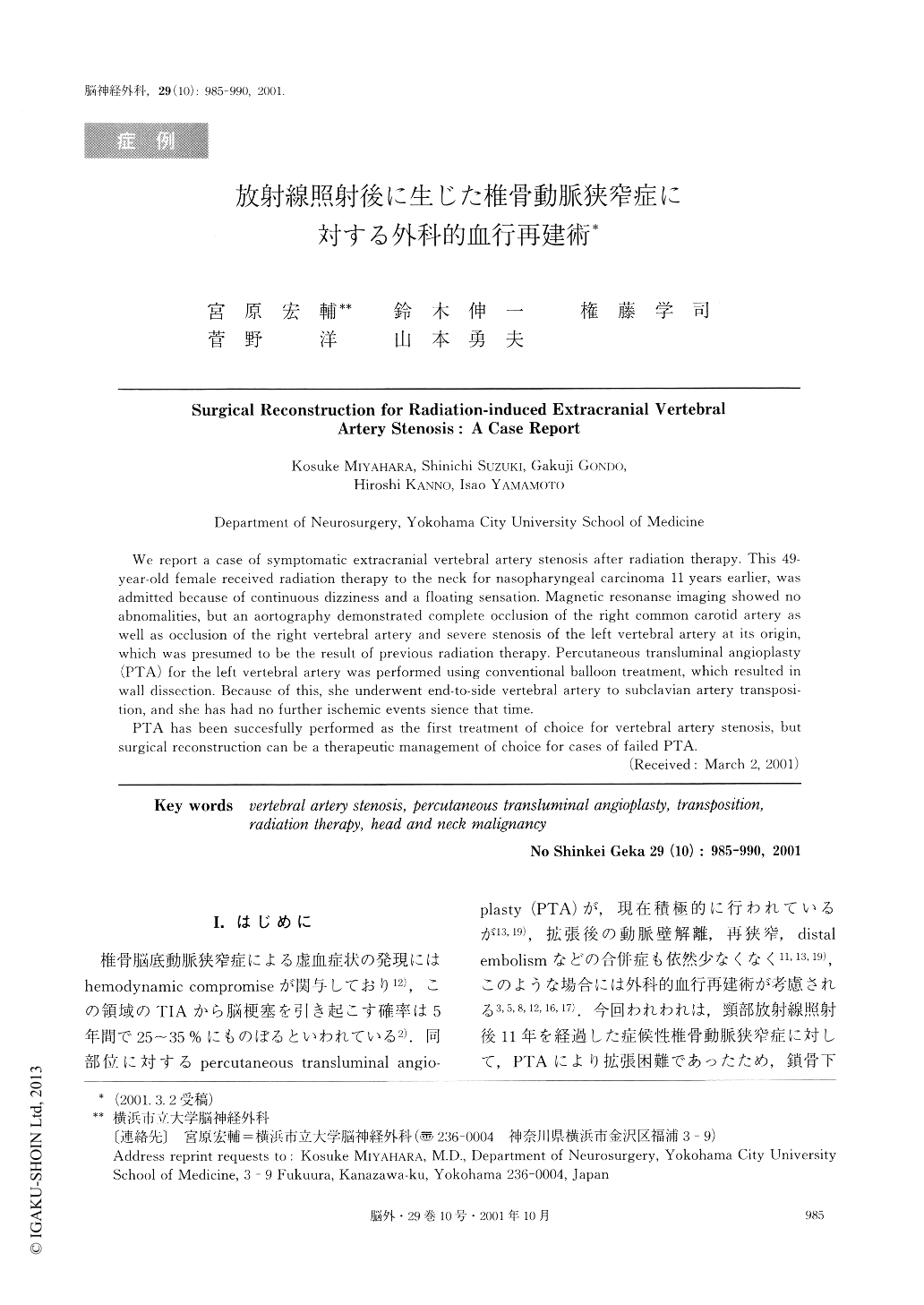Japanese
English
- 有料閲覧
- Abstract 文献概要
- 1ページ目 Look Inside
I.はじめに
椎骨脳底動脈狭窄症による虚血症状の発現にはhemodynamic compromiseが関与しており12),この領域のTIAから脳梗塞を引き起こす確率は5年間で25〜35%にものぼるといわれている2).同部位に対するpercutaneous transluminal angio-plasty(PTA)が,現在積極的に行われているが13,19),拡張後の動脈壁解離,再狭窄,distalembolismなどの合併症も依然少なくなく11,13,19),このような場合には外科的血行再建術が考慮される3,5,8,12,16,17).今回われわれは,頸部放射線照射後11年を経過した症候性椎骨動脈狭窄症に対して,PTAにより拡張困難であったため,鎖骨下動脈への転位術を施行し良好な結果が得られたで報告する.
We report a case of symptomatic extracranial vertebral artery stenosis after radiation therapy. This 49-year-old female received radiation therapy to the neck for nasopharyngeal carcinoma 11 years earlier, wasadmitted because of continuous dizziness and a floating sensation. Magnetic resonanse imaging showed noabnomalities, but an aortography demonstrated complete occlusion of the right common carotid artery aswell as occlusion of the right vertebral artery and severe stenosis of the left vertebral artery at its origin,which was presumed to be the result of previous radiation therapy. Percutaneous transluminal angioplasty(PTA) for the left vertebral artery was performed using conventional balloon treatment, which resulted inwall dissection. Because of this, she underwent end-to-side vertebral artery to subclavian artery transposi-tion, and she has had no further ischemic events sience that time.
PTA has been succesfully performed as the first treatment of choice for vertebral artery stenosis, butsurgical reconstruction can be a therapeutic management of choice for cases of failed PTA.

Copyright © 2001, Igaku-Shoin Ltd. All rights reserved.


